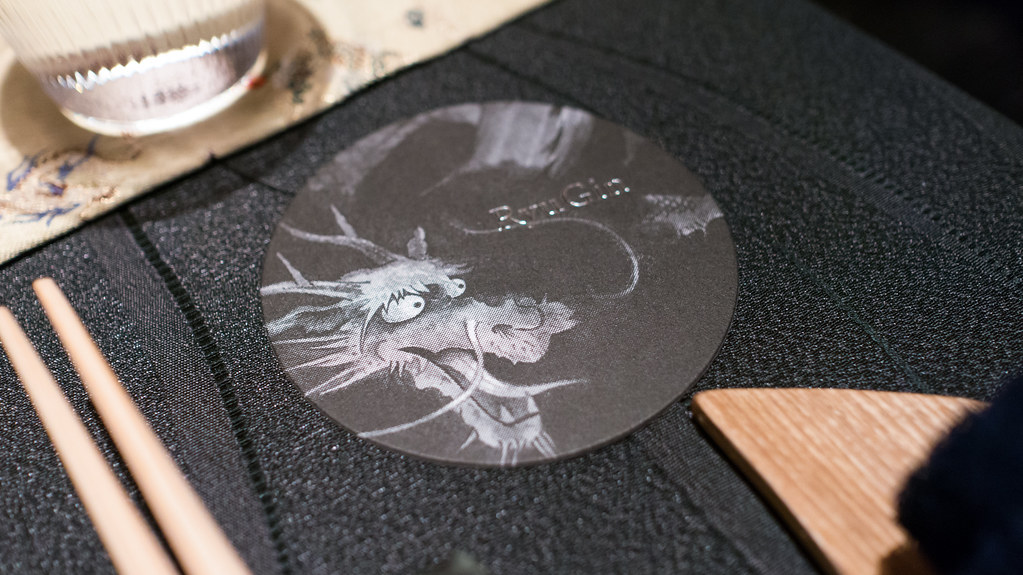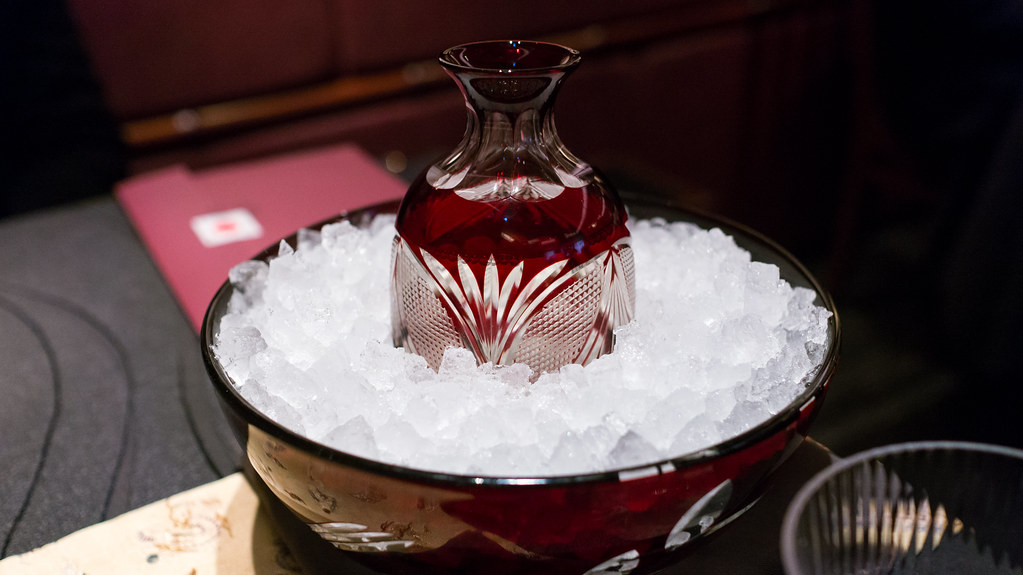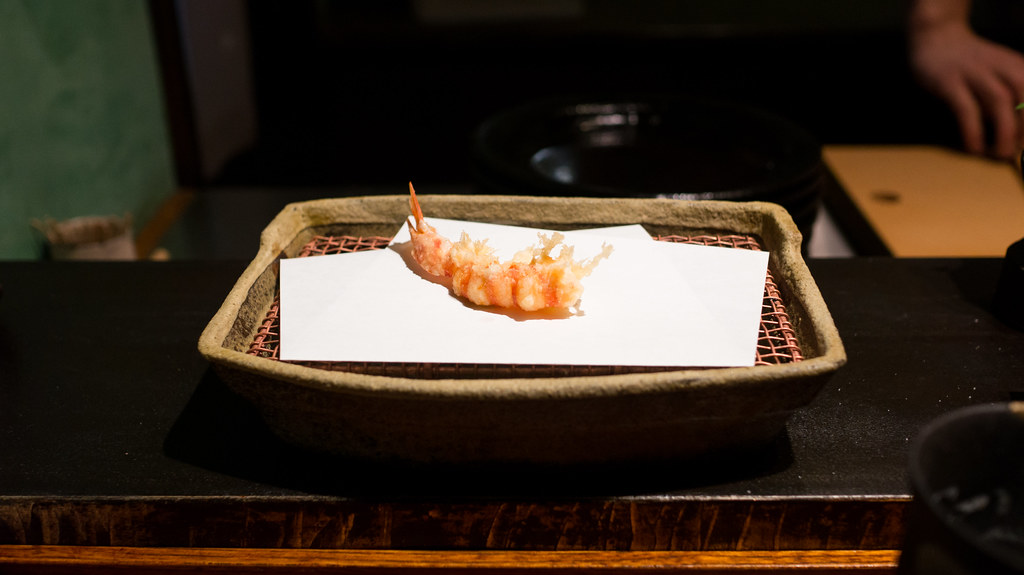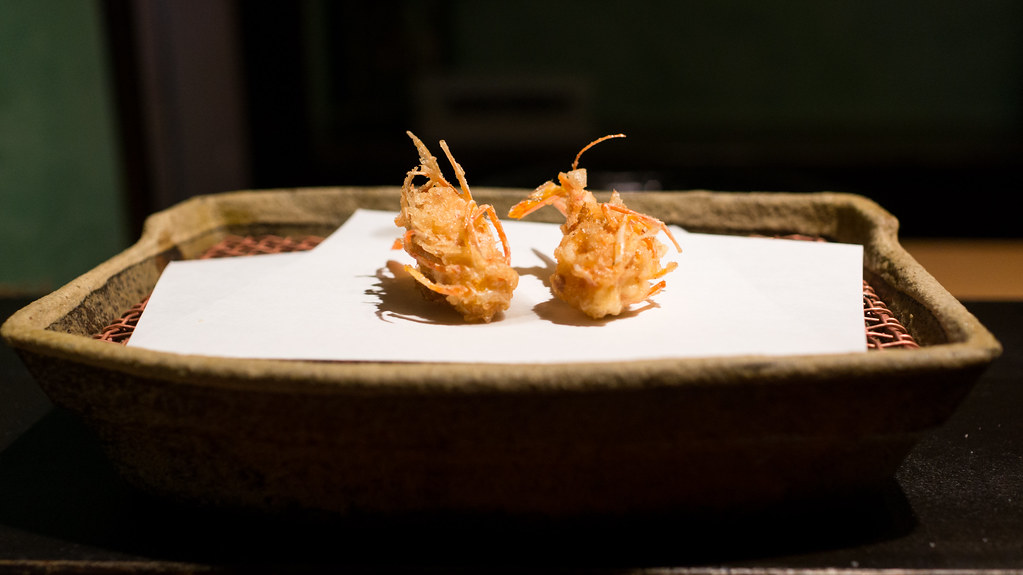There are few places I've been as to which opinions diverge as widely as Nihonryori RyuGin, the Tokyo restaurant of Chef Seiji Yamamoto. It holds three Michelin stars and, for whatever it's worth, has recently made a rapid climb up the S. Pellegrino "50 Best Restaurants" list.[1] More important to me, several folks whose opinions I've come to trust had spoken of great meals there.[2] And yet other reports – including more recent visits from some of those same people – ranged from indifferent to disappointed.
I can't speak to anyone's experience but my own. And even then, there are few culinary genres as to which I feel less qualified to opine than kaiseki, which lies at the foundation of RyuGin's style, and which for me was unexplored territory prior to this meal.[3] So take it for whatever it's worth: I found RyuGin to be a beautiful, well-executed and fully realized dining experience.
My admittedly naive understanding of kaiseki includes at least a few components: a strong focus on seasonality; a somewhat regimented procession of courses that feature a variety of cooking methods; and layers of symbolism – in the ingredients, the presentations, and even the plates themselves. As a meal that endeavors to tell a story of the season, this centuries-old tradition has uncanny similarities to what's lately been labeled the "New Nordic" school of cooking.
Though RyuGin has a reputation as being in the thrall of the "modernists," its style seems to have become more, rather than less, traditional over the past few years. Chef Yamamoto is familiar with the latest techniques and gadgetry, but for the most part, they seemed to stay in the kitchen and were virtually invisible on the plate. Rather, the meal unfolded as a meditation on Japanese ingredients, seasons, and flavors.
(You can see all my pictures in this Nihonryori RyuGin flickr set).
The attention to both elegance and craft is on display even before any food arrives, as the server offers a choice of beautiful Edo Kiriko sake cups for each diner to select.[4] Sake is decanted into a cut crystal carafe, nestled in a matching bowl filled with crushed ice. The coaster is emblazoned with a dragon, a motif that makes several appearances around the restaurant.[5]
The menu is wordy. This is a dinner with a "title," "Plating the Prodigality of Japanese Nature," and this first course is described as "Beginning with a variety of Sensations ... Seasonality, Aroma, Temperature, Texture and Assemblage."[6] But despite the verbosity, the dish is actually beautifully simple: a selection of seasonal vegetables, accompanied by a warm turnip soup garnished with a tongue of uni. It being February, the greenery consists mostly of tiny little buds and stems, what I believe the Japanese call "sansai" or "mountain vegetables," their compelling bitterness offset by a creamy pine nut dressing.
(continued ...)
▼
Friday, April 18, 2014
Wednesday, April 9, 2014
Help Kickstart Zak the Baker's Wynwood Bakery and Café
There are few things as elemental as bread. And yet there are few things as hard to find in Miami as a great loaf of bread. For me, that changed when I discovered Zak the Baker. For the past couple years, Zak the Baker (a/k/a Zak Stern) has been making beautifully simple natural leaven country bread. I got turned on to Zak's bread via Chef Michelle Bernstein, who has been serving it at her restaurant, Michy's. I rejoiced when my CSA farmer, Muriel Olivares of Little River Market Garden, started selling it on Saturdays at the Upper Eastside Farmers Market at Legion Park on Biscayne Boulevard. His bread is almost intensely crusty, its interior crumb is pocked with big airy holes, its flavor is hearty and rich. His bread has character, maybe even - dare I say it - soul.
(You can read more about Zak and his backstory in this feature in Edible South Florida, or this profile in Miami New Times).
For me, these are the kinds of things that elevate a food community: the folks who dedicate themselves to a particular craft, who focus on making one thing as best as they possibly can. Miami has plenty of glitzy restaurants with multi-million dollar investments behind them. It is still very much a work in progress when it comes to the network of farmers, bakers, butchers and fishmongers who can supply both restaurants and individuals with great products.
Sometimes, your community is what you make it. Here is one of those opportunities.
After spending a couple years gradually building up his business, working out of a variety of makeshift facilities, usually from early evening until late the next morning, Zak is making a big leap: he will be opening a bakery, retail outlet and café in Wynwood. And he's using Kickstarter to raise some of the capital needed to open the place. I said it a few weeks ago when I made my pledge:
Miami: if you want nice things, support them. Like Zak The Baker: Wynwood Bakery & Cafe on @Kickstarter http://t.co/xYLgjWMF2U
— Frodnesor (@frodnesor) March 21, 2014
With a week to go, Zak is more than 75% of the way to the additional $30,000 he is hoping to fund through Kickstarter. I don't normally use this platform for these kinds of purposes, but I'm doing so now: please help.For a little insight, I dropped by the space yesterday to talk to Zak about what he envisions. Unfortunately, I didn't record our conversation or take notes, so this is more in the nature of loose impressions than an interview, but here is what I learned:
(continued ...)
Thursday, April 3, 2014
"frying wizard" | Mikawa Zezankyo - みかわ是山居 - Tokyo
 We ate our share of sushi while in Japan, but sushi is not the be all and end all of Japanese cuisine. While planning our trip, several smart people told us we needed to, among other things, fit in at least one tempura meal while we were there. And just a couple weeks before we left, the New York Times ran a piece on one of Tokyo's high-end tempura temples, noting that such places are virtually nonexistent in the U.S.
We ate our share of sushi while in Japan, but sushi is not the be all and end all of Japanese cuisine. While planning our trip, several smart people told us we needed to, among other things, fit in at least one tempura meal while we were there. And just a couple weeks before we left, the New York Times ran a piece on one of Tokyo's high-end tempura temples, noting that such places are virtually nonexistent in the U.S.It's not that you can't find tempura in the States; indeed, many Japanese restaurants here try to do a little bit of everything, folding tempura, sushi, yakitori, ramen, soba and stir-fries all into the same menu.[1] But Japan is a place where specialists thrive. And at several restaurants in Japan, the art of tempura frying is treated with the same reverence and respect as we typically see only devoted to sushi. To experience it, we opted for Mikawa Zezankyo, a small place in a quiet neighborhood fairly close by the beautiful Kiyosumi Garden.
(You can see all my pictures in this Mikawa Zezankyo flickr set.)
Mikawa Zezankyo is in some ways a faithfully traditional place: you remove your shoes before being seated in one of the nine spots that surround the counter, and the menu – with ink-brushed calligraphy and illustrations – largely consists of the same kinds of "Edomae-tempura" items that would have been served a hundred years ago. But it is also quirkily individualistic: the chef apparently has a penchant for fedoras, which appear in various guises throughout the restaurant, including the massive brass exhaust fan over the cooking area.
The restaurant appears to be a three-person operation: Chef Tetsuya Saotome tends to the actual frying, as an assistant readies each course, and a server circulates behind the guests pouring drinks, clearing plates, and periodically swapping out the paper on which each item is deposited after it emerges from the bubbling oil. The first of these - all served one by one in an omakase style procession – is a plump ebi (shrimp), whose thin sheen of crispy batter only barely obscures its bright orange stripes. The chef recommends dipping in nothing but salt for this first bite, and he's right: its flavor is pure, clean and sweet, its texture still tender and supple once the delicate tempura casing is breached.
A second one follows, so you can also try the shrimp with the light, translucent soy and dashi dipping sauce bolstered with grated daikon oroshi. I had always been puzzled by the custom of serving tempura with a watery dipping sauce. Why go through all the trouble of creating this crispy exterior if you're going to just dunk it and make it all soggy? But here, anyway, the tempura coating still maintained some of its crunch even after being run through the dipping sauce, providing a further contrast of textures. Next, my favorite part, the shrimp's heads, crispy bites bursting with oceanic goodness.
(continued ...)









